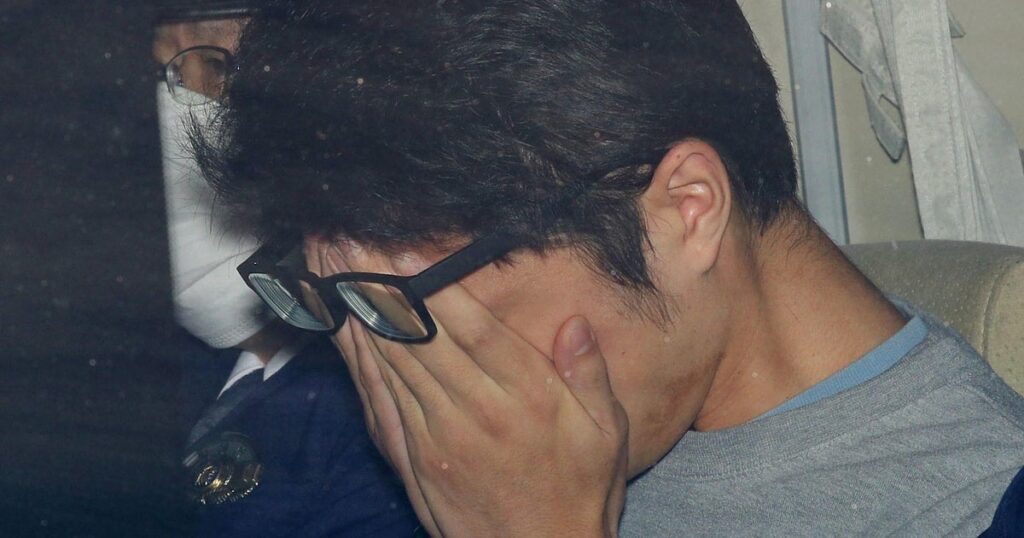
TOKYO – Japan on Friday carried out the execution of Takahiro Shiraishi, known as the “Twitter killer,” who was convicted for the murder and dismemberment of nine individuals he met online. This marks the nation’s first use of the death penalty since 2022.
Immediate Impact
Shiraishi, 34, was executed by hanging, a method traditionally used in Japan. His victims, all but one of whom were young women, were targeted through the social media platform now called X, where Shiraishi offered to help them with suicidal thoughts, or even die alongside them.
Key Details Emerge
According to The BBC, Shiraishi’s Twitter profile stated: “I want to help people who are really in pain. Please DM [direct message] me anytime.” He lured his victims, aged between 15 and 26, to his home near Tokyo, where he committed the murders.
Justice Minister Keisuke Suzuki described Shiraishi’s actions as a series of heinous crimes involving “robbery, rape, murder … destruction of a corpse and abandonment of a corpse.” Shiraishi’s crimes were discovered in 2017, and he was sentenced to death in 2020.
“Nine victims were beaten and strangled, killed, robbed, and then mutilated,” Suzuki told reporters in Tokyo. “Parts of their bodies were concealed in boxes, and parts discarded in a garbage dump.”
Background Context
The case shocked Japan, a nation where violent crime is relatively rare. Shiraishi’s apartment was infamously labeled a “house of horrors” by media outlets after police found nine dismembered bodies in coolers and toolboxes.
His lawyers argued for a prison sentence, claiming the victims had consented to die due to their suicidal tendencies. However, the judge dismissed this, citing the “cunning and cruel” nature of the crimes and emphasizing that Shiraishi preyed on mentally fragile individuals.
By the Numbers
- Execution was Japan’s first since 2022
- Shiraishi was sentenced to death in 2020
- Japan and the U.S. are the only G7 countries with capital punishment
- There were 15 executions in 2018, 3 in 2019, and 3 in 2021
Expert Analysis
Experts note that the case has reignited debate over Japan’s use of the death penalty. While public support remains strong, critics argue the system lacks transparency, with prisoners often not informed of their execution until the day it occurs.
Shiraishi’s execution was the first under Prime Minister Shigeru Ishiba’s administration. The timing is significant as Japan continues to grapple with balancing public sentiment and international human rights standards.
Regional Implications
Japan’s adherence to capital punishment sets it apart from most other developed nations. The execution of Shiraishi, alongside high-profile cases such as the 2018 execution of Aum Shinrikyo cult members, underscores the country’s steadfast approach to justice.
Meanwhile, human rights organizations continue to call for reforms, citing the prolonged solitary confinement and lack of transparency as areas of concern.
What Comes Next
As Japan moves forward, the government faces pressure to address the criticisms of its capital punishment system. The justice ministry reports that nearly half of the approximately 100 death row inmates are seeking retrials, highlighting the ongoing complexities within the legal framework.
The case of Takahiro Shiraishi serves as a stark reminder of the challenges Japan faces in navigating its criminal justice system amidst evolving societal values and international scrutiny.
If you or someone you know is in emotional distress or suicidal crisis, contact the National Suicide Prevention Hotline at 1-800-273-TALK (8255). For more information about mental health care resources, reach out to the National Alliance on Mental Illness (NAMI) HelpLine at 1-800-950-NAMI (6264) or email [email protected].







